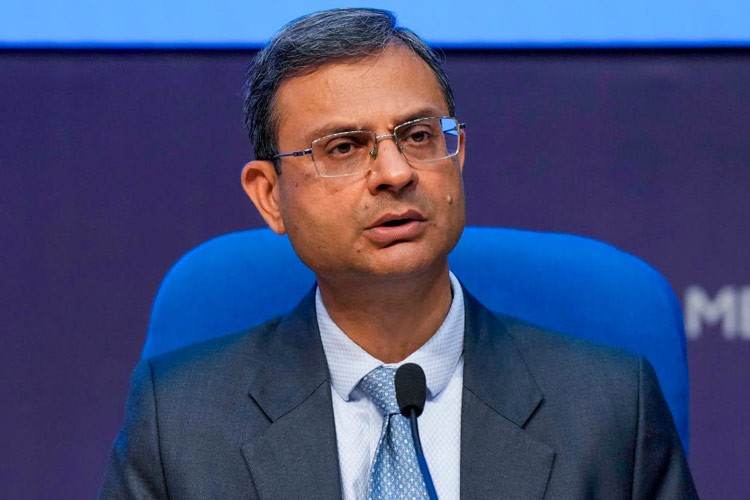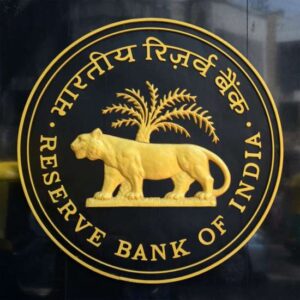
Sanjay Malhotra took over as Governor of the Reserve Bank of India at a time when the economy needed quiet competence more than loud theatrics. Inflation is cooling, growth is steady, and India remains the fastest-growing major economy in the world. But beneath the surface, the financial system is facing challenges that require more than routine macroeconomic management. They demand a full-scale rethink of how banks operate, how customers are treated, and how new technologies are governed.
Malhotra outlined his thinking in a detailed interview to The Times of India—a conversation that offers useful clues to the shape of things to come. His message was understated but clear: the RBI must ensure both institutional strength and consumer protection, while preparing the banking system for the demands of a rapidly changing economy.
READ I India-Bangladesh trade tensions rise with Dhaka’s China pivot
From mis-selling to mistrust
One of his first priorities is to clean up the murky space where banks double up as sellers of insurance and investment products. Too often, banks have pushed insurance-cum-investment plans to customers without fully disclosing the risks or costs involved. Complaints have piled up, especially from elderly depositors and middle-income earners, who are often misled into locking up savings in low-yield products disguised as safe investments. The RBI under Malhotra is taking this seriously—and rightly so. Ensuring that financial products are sold responsibly is not a footnote to banking regulation. It is central to public trust in the financial system.

But fixing retail practices is only one part of the picture. Malhotra also acknowledges the awkward reality that India has too many small banks and too few large ones with the heft to compete internationally. The RBI is reviewing its licensing and ownership rules to allow successful institutions—such as small finance banks—to graduate to universal banking. This signals a shift from the earlier “one size fits all” approach to a more flexible system that rewards good performance and strong governance.
At the same time, the RBI is treading carefully on shareholding norms, especially for foreign banks and investors. The underlying idea is sound: ownership in banks must be tied to proven competence, clean track records, and the ability to manage risks in a complex financial environment. After all, banking is not just another business—it’s where ordinary citizens entrust their life savings.
The test of RBI independence
On the monetary side, Malhotra has inherited a system flush with liquidity. The RBI has pumped in nearly Rs 9 lakh crore into the banking system. With inflation easing, the central bank has adopted an accommodative stance—but is resisting the temptation to rush into rate cuts. This caution is welcome. Interest rates must be aligned with macroeconomic conditions, not dictated by market impatience. The Monetary Policy Committee (MPC) will decide the timing and pace of rate cuts, and the RBI, under Malhotra, is doing well to let the committee process play out.
Also reassuring is the RBI’s stand on the exchange rate. It has made it clear that it does not target any specific rupee-dollar value. Instead, it intervenes only to reduce excessive volatility. This is the right approach. A central bank should not waste reserves trying to defend arbitrary exchange levels, especially when the real test lies in how resilient the economy is to external shocks.
Insolvency, KYC, and cyber risk
The interview also touched on an underappreciated success story: the Insolvency and Bankruptcy Code (IBC). In its early years, IBC had a poor track record—more firms were ending up in liquidation than resolution. But that trend has now reversed. For every one liquidation, two companies are being successfully resolved. Pre-admission settlements—where companies repay dues to avoid insolvency—have shot up. This is a clear sign that the law is beginning to work, not just as a recovery mechanism but as a deterrent against strategic default.
That said, there’s still a serious problem with delays. The average time taken to resolve a case is now close to 600 days—more than double the legal limit of 270 days. This weakens creditor confidence and dilutes the very objective of speedy resolution. Malhotra has a job on his hands: to work with the government and judiciary to strengthen the NCLT infrastructure and ensure the law functions as intended.
One of the more technical, but no less important, areas Malhotra is working on is the Know Your Customer (KYC) process. Anyone who has opened a bank account or invested in mutual funds knows the pain of repeating the same paperwork multiple times. The Central KYC Registry (CKYCR), meant to solve this problem, is finally being pushed forward. If implemented well, it could simplify customer experience across financial products and reduce friction in onboarding.
Cybersecurity has also emerged as a key area. As India’s financial system becomes increasingly digital, cyber threats have become more sophisticated. The RBI is encouraging the use of tools like machine learning to detect mule accounts—often used in financial fraud—and working closely with law enforcement agencies to tackle risks. This is another example of how the central bank is trying to pre-empt problems rather than firefight after the damage is done.
Payments ecosystem in focus
On payments, Malhotra is taking a measured stance. Some have raised concerns about the dominance of a few players in the UPI ecosystem. But with over 40 third-party application providers in the market, the RBI doesn’t see a major concentration risk—for now. It is also not keen to make UPI a profit centre through fees, at least until its foundational role in inclusion is complete.
In many ways, Malhotra’s leadership style marks a return to the basics. He is not looking to reinvent the wheel, but to ensure that the wheels turn smoothly. He believes that regulation should be tight where it matters—such as governance and mis-selling—but supportive of innovation and scale where possible.
His dual focus on customer protection and institutional resilience is exactly what India needs at this stage. For too long, financial sector reform has been seen as a matter of interest rates and liquidity. But true reform lies in getting the plumbing right—how banks behave, how borrowers are treated, how regulators respond to risk, and how ordinary citizens experience the system.
